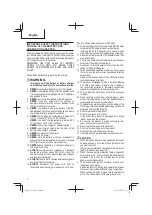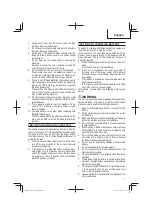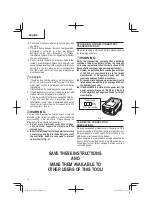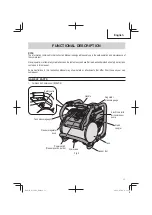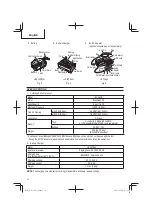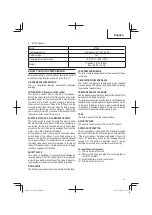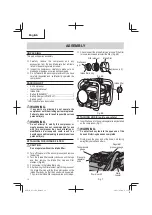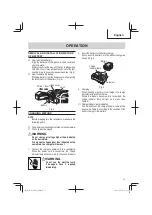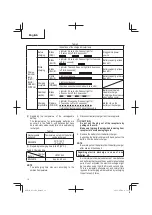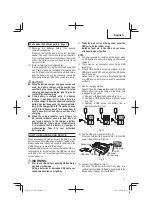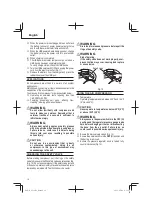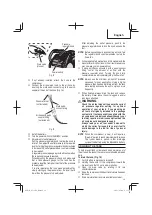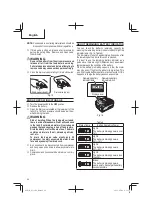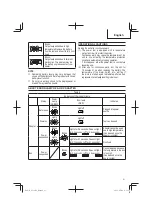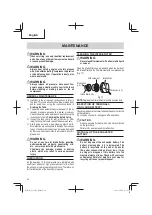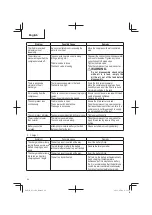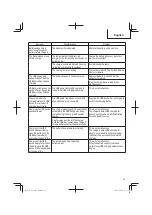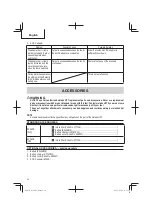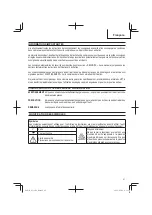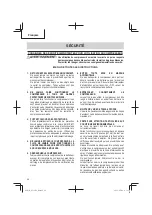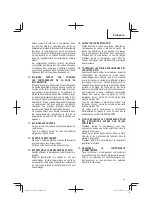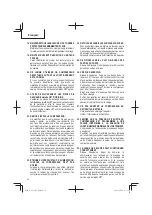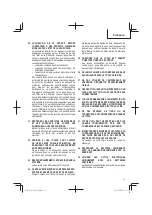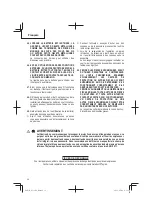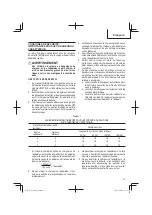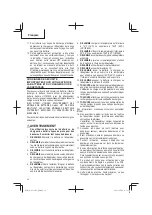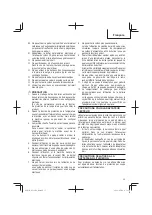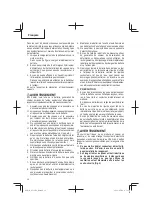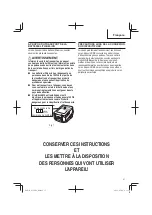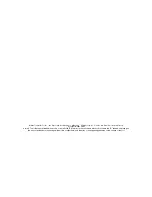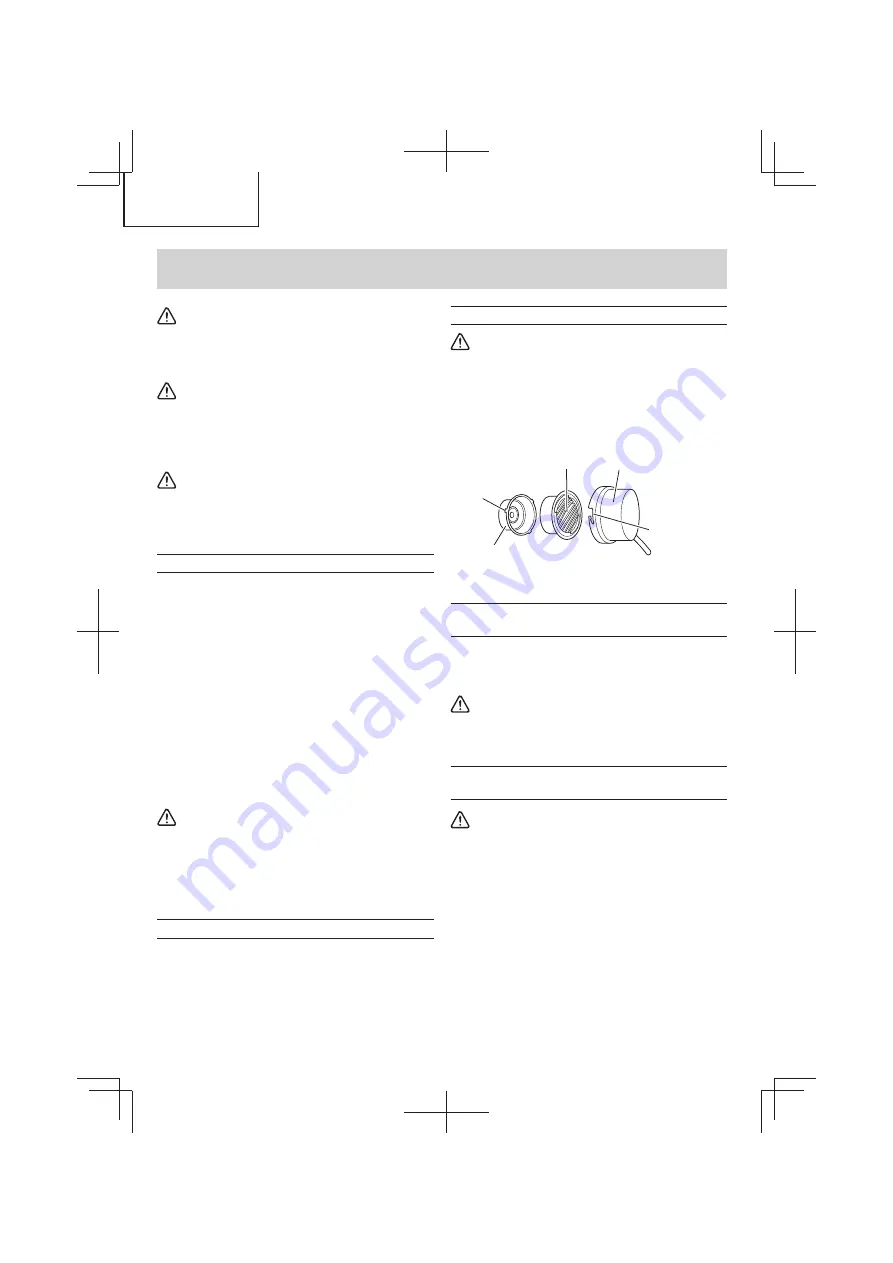
22
English
WARNING
When servicing, use only identical replacement
parts. Use of any other parts may create a hazard
or cause product damage.
WARNING
Always wear safety goggles or safety glasses
with side shields during compressor operation
or when blowing dust. If operation is dusty, also
wear a dust mask.
WARNING
Always release all pressure, disconnect from
power supply, and allow unit to cool to the touch
before cleaning or making repairs on the air
compressor
GENERAL MAINTENANCE
○
Humidity in the air causes condensation to form in
the tank. This condensation should be drained daily
and/or every hour, using the instructions found in
Draining the Tank
.
○
The safety valve automatically releases air if the air
receiver pressure exceeds the preset maximum.
Check the safety valve before each use following the
instructions found in
Checking the Safety Valve
.
○
Inspect the tank yearly for rust, pin holes, or other
imperfections that could cause it to become unsafe.
○
Avoid using solvents when cleaning plastic parts.
Most plastics are susceptible to damage from various
types of commercial solvents and may be damaged
by their use. Use clean cloths to remove dirt, dust, oil,
grease, etc.
WARNING
Do not at any time let brake
fl
uids, gasoline,
petroleum
-
based products, penetrating oils,
etc., come in contact with plastic parts.
Chemicals can damage, weaken or destroy
plastic which may result in serious personal
injury.
LUBRICATION
All the bearings in this compressor are lubricated with
a su
ffi
cient amount of high grade lubricant for the life of
the unit under normal operating conditions. Therefore, no
further lubrication of the bearings is required.
CLEANING THE INTAKE FILTER
WARNING
Never
clean
fi
lter element with a
fl
ammable liquid
or solvent.
Open the intake
fi
lter once a week and clean the inside of
the intake
fi
lter and the
fi
lter element with compressed air
(Fig. 17).
Intake
fi
lter
Intake
fi
lter body
Filter element
Grooves (× 3)
Protrusions
(× 3)
Fig. 17
NOTE:
Replace the
fi
lter element when it becomes dirty.
INSPECTION OF TERMINALS
(
TOOL AND BATTERY
)
Check to make sure that swarf and dust have not collected
on the terminals.
On occasion check prior, during and after operation.
CAUTION
Remove any swarf or dust which may have collected
on the terminals.
Failure to do so may result in malfunction.
DISPOSAL OF THE EXHAUSTED
BATTERY
WARNING
Do not dispose of the exhausted battery. The
battery must explode if it is incinerated. The
battery is recyclable. At the end of it’s useful
life, under various state and local laws, it may
be illegal to dispose of this battery into the
municipal waste stream. Check with your local
solid waste o
ffi
cials for details in your area for
recycling options or proper disposal.
MAINTENANCE
00Book̲EC36DA̲NA.indb 22
00Book̲EC36DA̲NA.indb 22
2021/07/08 9:36:18
2021/07/08 9:36:18

